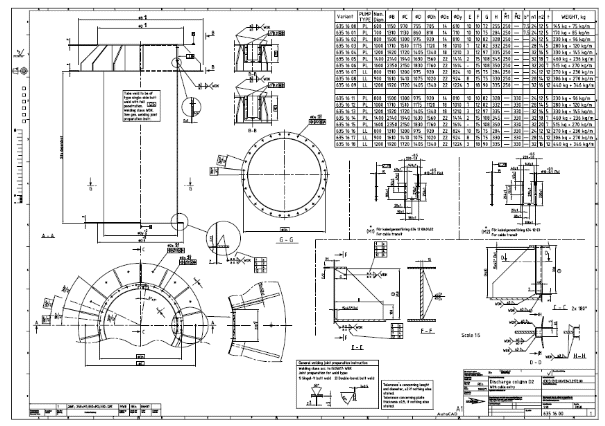the 11th annual convergence and society conference advancing business journalism and convergence university of south carolina school of
The 11th Annual Convergence and Society Conference
Advancing Business Journalism and Convergence
University of South Carolina
School of Journalism and Mass Communications
Sept. 27-28, 2012
SHADOW BANKING
In plain English
By Mary Fricker
[email protected]
Shadow banking was the epicenter of the financial crisis. Almost no
reporters understood it then and not many understand it now. But it is
important because it probably provides half the credit in this
country, and we’ve seen how dangerous it can be, so we need to know
how to cover it going forward.
To give you an overview, I’m going to describe five steps to shadow
banking, starting with the step you already know, about home loans. As
I go along, I’ll suggest some local stories reporters can do, to get
started.
But first let’s ask: What is banking?
“Banking" is what a bank does when it borrows short term, like from a
depositor, and lends long term, like for a 30-year mortgage. That’s
dangerous, because if lots of the depositors suddenly get scared and
demand their money back right now - this is called a run on the bank -
the bank can't repay them because its money is tied up in 30-year
mortgages. Pretty soon the depositors can force the bank into
bankruptcy.
That’s why we have FDIC insurance - so depositors will feel safe and
not run on their banks.
Shadow bankers make loans, too, like traditional banks do. But shadow
bankers don’t get their money from depositors. They borrow it from
Wall Street.
For Wall Street lenders to feel safe, they usually lend to shadow
bankers for brief periods, often just overnight, and they take
securities as collateral, mainly U.S. treasuries, bonds and stocks.
For shadow banking to work, there must be securities.
If Wall Street lenders lose faith in those securities and panic, they
will demand their money back. That's a lot like a run on a bank. If
the shadow bank can’t pay back the money, right now, the Wall Street
lenders can force it into bankruptcy.
That's what happened in 2007 and 2008.
Little has changed. It could happen today. It's happening in Europe
right now.
So shadow banking is banking that happens outside traditional
deposit-based banking.
The name came from economist and PIMCO executive Paul McCulley during
remarks at the Fed's annual symposium in Jackson Hole, Wyoming, in
August 2007, and it has since been widely adopted by economists. Some
critics claim the name is just an effort by economists and journalists
to make a gigantic and perfectly common segment of the credit markets
appear dark and mysterious, as a way to excuse their failure to expose
its dangers before the financial crisis erupted.
Who are the shadow bankers and the Wall Street lenders?
Here’s a list:
Asset management firms
Bank holding companies
Banks, investment
Banks, traditional
Companies, public and private
Exchange-traded funds
Hedge funds
Insurance companies
Money market funds
Municipalities
Mutual funds
Pension plans
Private equity firms
Securities dealers
Securities lenders
Securitizing firms
Sovereign wealth funds
University endowments
Fannie Mae and Freddie Mac
Federal Home Loan Banks
Federal Reserve and other central banks
Reporters who cover any of the institutions on this list need to be
watching for shadow banking. Most of these companies make financial
reports that are public. In the accompanying Shadow Banking Resources
handout are several examples.
These are mostly giant institutions. Many are both borrowers and
lenders on the shadow banking market. Notice that traditional banks
are also shadow bankers.
Much of the action in shadow banking is driven by the institutions
that have big pools of cash they need to invest – like money market
funds, insurance companies, hedge funds, pension plans,
municipalities, even university endowments.
The purpose of shadow banking is to get those big pools of money down
to the consumers and businesses who want to borrow it. I’ll show you
how that’s done, in the five steps I’m going to tell you about.
Where do these companies get their big pools of money? From you and
me.
In journalism, we always say Follow the Money. In shadow banking, the
money comes from people like you and me – from our money market funds,
pension plans and so on – and it goes to people like you and me, when
we buy a house or a car, or get a student loan, for example.
With that as background, here are the five steps of shadow banking
that I want to tell you about:
1.Make loans.
2. Make securities (this is called securitization).
3. Sell securities.
4. Insure securities.
5. Keep securities to lend and repo.
Along the way, we’ll talk about six kinds of shadow-banking
transactions:
1. Asset-backed securities - ABS
2. Collateralized debt obligations - CDO
3. Asset-backed commercial paper - ABCP
4, Credit default swaps - CDS
5. Securities lending - SecLend
6. Repurchase agreement – Repo
Our job as journalists is to tell about these five steps and these six
transactions so often that they become familiar, and do not seem
mysterious at all.
Step One: Make loans.
In the first step, a company makes a loan to a consumer or a business.
Mostly what you’ve heard about was home loans, because they’re the
ones that blew up. But there are also lots of other kinds of loans.
Here’s a list:*
Aircraft leases
Auto loans
Auto leases
Commercial real estate
Computer leases
Consumer loans
Credit card receivables
Equipment leases
Equipment loans
Franchise loans
Healthcare receivables
Health club receivables
Home equity loans
Insurance receivables
Intellectual property cash flows
Manufactured housing loans
Mortgages, commercial
Mortgages, residential
Motorcycle loans
Music royalties
RV loans
Small business loans
Student loans
Trade receivables
Time share loans
Tax liens
Viatical settlements
Companies making these loans are traditional banks, mortgage lenders,
finance companies, credit card companies, and others.
Step Two: Make securities.
In step two, the company that makes the loan sells it to another
company that I’m going to call a securitizing firm. There are
different kinds.
Here’s a list:
Real Estate Mortgage Investment Conduit - REMIC
Special purpose entity - SPE
Special purpose vehicle - SPV
Structured investment vehicle - SIV
Real Estate Investment Trust - REIT
Variable interest entity - VIE
These firms have mainly one purpose: Pool a bunch of loans together
and make securities backed by the loans.
The securities are called asset-backed securities. In a more
complicated form, they’re called collateralized debt obligations or
CDOs. CDOs were responsible for many of the losses in the financial
crisis.
Many securitizing firms are offshore, but you may have one near you. I
do.
Step Three: Sell securities.
Where does the securitizing firm get the money to buy the loans from
the lending company? Mainly it sells three things.
First and second, it sells the asset-backed securities and the CDOs.
What few of us understood until it was too late was that a lot of the
buyers are big investment banks and traditional banks. So when the
crisis hit, the big banks got stuck with the losses. If real investors
had been buying these things, and lost money, who cares? Investors
lose billions of dollars every day. But when banks lose billions of
dollars, that’s a crisis.
Reporters who cover banks need to be watching their financial
statements for this.
The third way the securitizing firm gets money is this: It sells
asset-backed commercial paper, which is a kind of IOU that it promises
to buy back real soon, probably tomorrow. Many of the buyers of this
asset-backed commercial paper were money market funds. In the crisis,
the money market funds panicked, and they stopped buying the
asset-backed commercial paper. That was called a run on the
asset-backed commercial paper market, and it was a big reason for the
financial crisis, because it caused the securitizing firms to
collapse, which in turn caused the lending companies to collapse.
Reporters who cover money market funds or personal finance need to be
watching for this.
Step Four: Insure securities.
By this point in our steps, a lot of companies own asset-backed
securities, CDOs, and asset-backed commercial paper. The securitizing
firms own some, and they’ve sold a lot to others. Companies that own
securities often buy derivatives called credit default swaps to
protect themselves. Credit default swaps pay off when securities
default. They're like insurance. Companies that don't own securities
also buy credit default swaps, to speculate. Often the same company
both buys and sells these swaps.
That’s one reason shadow banking is so interconnected. AIG was the
most famous collapse caused in part by credit default swaps.
Step Five: Keep securities to lend and repo.
Now if you’re a big company or bank sitting there holding a lot of
securities, probably including U.S. Treasuries but also asset-backed
securities, CDOs and asset-backed commercial paper - you’re collecting
the interest payments, and you’re protected by credit default swaps -
your busy mind will start trying to think of ways to use those
securities to make more money.
In shadow banking there are two main ways: Securities lending and
repurchase (or “repo”) agreements.
In securities lending, companies briefly lend securities to other
shadow bankers in exchange for cash, often just for overnight. AIG
lost almost as much money on its securities lending as it did on its
credit default swaps.
In a repurchase agreement, companies use securities as collateral to
get a loan from another shadow banker, often just for overnight.
At this step in shadow banking something interesting happens.
In a securities lending transaction or in a repurchase transaction,
somebody gives cash and gets back securities. Whoever gets the
securities can re-use them as collateral to get their own repo loan.
Then the second repo lender can re-use the same securities as
collateral to get a repo loan for themselves. And so on.
This is a daisy chain, where the same securities become collateral for
several loans. It’s called “rehypothecation,” and it’s another reason
that shadow banking is so interconnected.
Although repo loans are often made just for overnight, usually that
loan gets renewed day after day. But at any time the repo lender can
call the loan.
Companies that borrow on the repurchase market are often in danger,
because their lenders can disappear overnight. Journalists should be
watching financial statements for repurchase loans.
In the financial crisis, repo lenders freaked out over the quality of
the home loans that were in the securities that they’d taken as
collateral. They demanded their money back. Some economists have
called this a Run on Repo. Federal Reserve Chairman Ben Bernanke and
U.S. Treasury Secretary Timothy Geithner have said this was the thing
that scared them the most during the financial crisis, because a run
by repo lenders could destroy the giant companies and financial
institutions that rely on repo to finance their daily operations, just
like a run by bank depositors can destroy a bank.
That’s the basics of shadow banking. It can get a lot more complicated
than that, but that's the basics.
Since the crisis, shadow banking has fallen by more than one-fourth.
This is an important reason our economy is struggling and it’s hard to
get a loan.
But shadow banking will be back. Journalists need to be ready.
The repurchase market
Now I’d like to tell you a little more about repo.
Repos are the heart and soul of shadow banking, because they’re
usually the cheapest way for big borrowers to get quick cash and the
safest way for big lenders to lend.
Before the crisis, when shadow bankers bought asset-backed securities,
CDOs, asset-backed commercial paper or credit default swaps, they
often paid for them by getting a repo loan.
At the time of the crisis, at least $5 trillion was changing hands
every day on the U.S. repurchase market. The main borrowers were
companies like Countrywide, Bear Stearns and Lehman Brothers. The main
lenders were, and still are, prime money market funds.
The Federal Reserve also has an interest in repos, because it has
conducted its monetary policy transactions largely on the repurchase
market, as do most central banks.
In the U.S., the securities that companies use as collateral for a
repo loan are usually U.S. Treasuries and other government-backed
securities. So the lender feels safe. But in the lead-up to the
financial crisis, more and more of the collateral was asset-backed
securities, CDOs, and asset-backed commercial paper, many backed by
mortgages.
When mortgages tanked, repo lenders fled, and worldwide financial
markets teetered on the abyss.
Today the repo market is 40 percent smaller than its peak in March
2008, in part because of the bad economy and also because
securitization has collapsed and there are not as many securities to
use as collateral.
But bankers are out there right now looking for the next great repo
collateral.
It better be safe. Journalists need to be watching this. They need to
start developing their sources right now.
-30-
Short-hand descriptions for the six shadow banking transactions:
These two are securities for sale:
1. Asset-backed securities - ABS
2. Collateralized debt obligation shares - CDO
This is a borrowing of cash that is pretending to be a security for
sale:
3. Asset-backed commercial paper - ABCP
These are derivatives that insure securities:
4, Credit default swaps - CDS
This is a loan of securities:
5. Securities lending - SecLend
This is a borrowing of cash pretending to be a sale of securities
6. Repurchase agreement - Repo
*From "Securitization" by Yale University professors Gary Gorton and
Andrew Metrick.
 TERVISEDENDUSE KUTSESTANDARDITE KÄSIRAAMAT PROJECT NUMBER 20081209 SISUKORD GLOSSAR3 1
TERVISEDENDUSE KUTSESTANDARDITE KÄSIRAAMAT PROJECT NUMBER 20081209 SISUKORD GLOSSAR3 1 G UÍA N°5 SÍNTESIS Y EVALUACIÓN FORMATIVA (COVID 19)
G UÍA N°5 SÍNTESIS Y EVALUACIÓN FORMATIVA (COVID 19) NASLOV RADA NA SRPSKOM JEZIKU PETAR PETROVIĆ NIKOLA NIKOLIĆ
NASLOV RADA NA SRPSKOM JEZIKU PETAR PETROVIĆ NIKOLA NIKOLIĆ INTENSIVE COURSE IN ARABIC LANGUAGE TO NONARABIC SPEAKERS JULY
INTENSIVE COURSE IN ARABIC LANGUAGE TO NONARABIC SPEAKERS JULY EK–1 BALIKÇILIK ÜRÜNLERİNE AİT TAZELİK KRİTERLERİ 1 YUMUŞAKÇALAR (KAFADAN
EK–1 BALIKÇILIK ÜRÜNLERİNE AİT TAZELİK KRİTERLERİ 1 YUMUŞAKÇALAR (KAFADAN SEED SAVING LEVEL TOMATO SOLANUM LYCOPERSICUM (FORMERLY LYCOPERSICON ESCULENTUM)
SEED SAVING LEVEL TOMATO SOLANUM LYCOPERSICUM (FORMERLY LYCOPERSICON ESCULENTUM) ESPECIFICACIONES PARA LA CONSTRUCCIÓN Y COLOCACIÓN DE TUBO (BROCAL)
ESPECIFICACIONES PARA LA CONSTRUCCIÓN Y COLOCACIÓN DE TUBO (BROCAL) CONSEJERÍA DE EDUCACIÓN CULTURA Y DEPORTES VICECONSEJERÍA DE CULTURA
CONSEJERÍA DE EDUCACIÓN CULTURA Y DEPORTES VICECONSEJERÍA DE CULTURA HTTPWWWHORTPURDUEEDUNEWCROPAFCMFLAXHTML INDEX | SEARCH | HOME FLAX ES
HTTPWWWHORTPURDUEEDUNEWCROPAFCMFLAXHTML INDEX | SEARCH | HOME FLAX ES PLAN DE ACTUACIÓN MUNICIPAL ANTE EL RIESGO DE INUNDACIONES
PLAN DE ACTUACIÓN MUNICIPAL ANTE EL RIESGO DE INUNDACIONES GRADE 8 MODULE 1 UNIT 1 LESSON 11 CHARACTER
GRADE 8 MODULE 1 UNIT 1 LESSON 11 CHARACTER